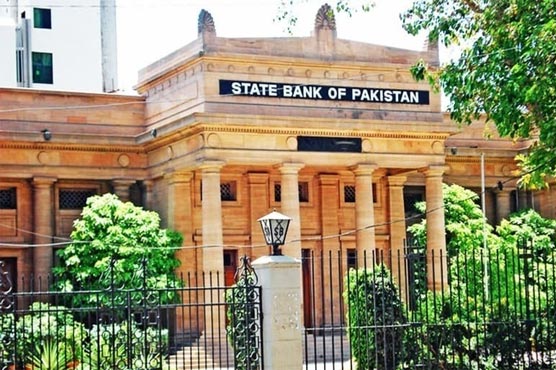SBP initiatives help reduce pace of Non-Performing Loans

SBP identified many idiosyncratic factors in Mid-Year Performance Review of the Banking Sector.
ISLAMABAD (APP) – The increase in Non-Performing Loans (NPLs) could have been higher, had the State Bank of Pakistan (SBP) not allowed banks to consider the deferment and restructuring or rescheduling of loans on borrowers’ request, according to Mid-Year Performance Review of the Banking Sector.
In its Mid-Year Performance Review of the Banking Sector (January-June 2020), the SBP identified many idiosyncratic factors, in addition of COVID-19 impacts that have contributed in increasing the domestic Non-Performing Loans (NPLs).
“Besides the general economic slowdown witnessed after the outbreak of COVID-19, the idiosyncratic factors in agriculture, energy, petroleum (OMCs) and cement sectors contributed to the build-up of domestic NPLs,” it said.
According to the review, as for the overseas operations, banks continued to face rise in NPLs mainly in the gulf region. Moreover, it added, the disruption in economic activities also hampered the loan recovery efforts of the banks.
A total of Rs19.9 billion was recovered during the first half of calendar year 2020 (H1CY20) as compared to Rs36.7 billion in first half of calendar year 2019 (H1CY19).
“The increase in NPLs could have been higher, had SBP not allowed banks to consider the deferment and restructuring/rescheduling of loans on borrowers’ request,” the report added.
Within banks, the rise in NPLs was mostly concentrated in a few local commercial banks as well as in a specialized bank. The infection ratio of public sector commercial banks and local private banks inched up to 15.4 percent (13.2 percent in H2CY19) and 7.3 percent (6.9 percent by end of H2CY19), respectively. The rise in NPLs, in case of specialized banks, was quite significant as the GNPLR jumped to 52.7 percent from 34.1 percent by end H2CY19.
The NPLs in agribusinesses depict considerable seasonality during Qurarter 2, it said adding that the increase, which is mainly concentrated in one of the specialized banks, coincided with harvesting of wheat crop, whereby recovery takes time due to realization of payments from farmers of wheat and sugarcane amid partial payments.
But this year locust attacks on crops, disruptions at the time of harvest such as unavailability of labour and lack of public transportation due to pandemic also contributed to the rise in the sector’s NPLs.
In case of energy, structural problems for a couple of firms, such as delays in capacity payments leading to build-up of receivables and non-finalization of COD resulting in deferred operations, increased the non-performing loans during Q2CY20.
Other energy related sectors, such as Oil Marketing Companies (OMCs), also faced a challenging business environment.
Most of the firms faced losses due to oil price volatility in international markets and further fall in domestic consumption amid the pandemic.
Similarly, various firms, in the cement sector, struggled to cope with higher costs (such as financing and energy), which squeezed their margins as they were unable to pass on the full impact to consumers due to subdued demand.
Resultantly a few firms with weak financials were unable to service their debt obligations.
As far as, the overseas operation of banks was concerned, it contributed Rs18.0 billion to the increase in NPLs during H1CY20. Around two third of this increase, occurred in Q1CY20 when a couple of banks classified some of their exposure in the Gulf region.
With the rise in NPLs, banks made provisions of Rs71.3 billion during H1CY20; more than double the amount of Rs32.2 billion in H1CY19. Resultantly, the provision coverage ratio increased to 81.6 percent (78.4 percent in H1CY19).
The Net NPLs ratio (NNPLR), though increased slightly to 1.9 percent in H1CY20 from 1.7 percent in H2CY19, it remained lower than 2.1 percent recorded a year earlier.
Similarly, the Net NPLs to Capital ratio inched up to 8.96 percent in H1CY20 from 8.91 percent in H2CY19, though it remained lower when compared to 11.5 percent at the end of H1CY19.
This implies that despite challenging environment, the increase in credit risk indicators remained contained during H1CY20 due to SBP policy measures, the review added.


